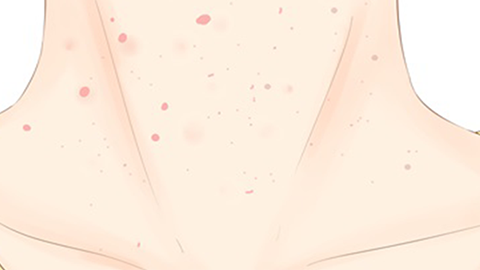What should I do if I get filiform warts?
Generally, acquiring filiform warts may be caused by factors such as impaired skin barrier function, weakened immunity, infection with low-risk types of human papillomavirus (HPV), prolonged skin friction or irritation, and chronic local skin inflammation. It is recommended to seek timely medical consultation to identify the underlying cause and improve the condition under a doctor's guidance through general treatments, medications, or physical therapies. A detailed analysis is as follows:

1. Impaired skin barrier function: Dry skin, frequent scratching, or the use of irritating cleansers can weaken the skin's barrier function, making it more susceptible to viral infection and resulting in filiform warts. In daily life, reduce the use of soap-based cleansing products, apply a gentle moisturizing lotion after bathing, avoid scratching the skin, and wear loose and soft clothing to reduce friction and help repair the skin barrier.
2. Weakened immunity: Long-term sleep deprivation, malnutrition, or excessive fatigue can lower the body's immunity, making it difficult to resist viral infection and leading to the development of filiform warts. It is important to adjust your lifestyle, ensure 7-8 hours of sleep daily, consume more protein- and vitamin-rich foods such as eggs, vegetables, and fruits, and engage in appropriate physical exercise to enhance immunity.
3. Infection with low-risk types of human papillomavirus: Infection of the skin with low-risk HPV types such as HPV 6 and 11 can cause abnormal proliferation of epidermal cells, forming filiform warts. As directed by a physician, topical medications such as imiquimod cream, fluorouracil ointment, or recombinant human interferon α2b gel can be applied to the warts to inhibit viral replication and promote wart shedding.
4. Prolonged skin friction and irritation: Areas such as the neck and armpits may experience minor skin injuries due to constant friction from collars or jewelry, allowing easier viral entry and the development of filiform warts. Avoid wearing metal jewelry, choose round-neck and loose clothing to minimize local friction. Additionally, cryotherapy can be used to remove the warts by freezing the tissue, causing it to die and fall off.
5. Chronic local skin inflammation: Persistent mild skin inflammation, such as seborrheic dermatitis, can reduce skin resistance and increase the likelihood of viral infection, thereby triggering filiform warts. It is important to first treat the underlying inflammation, using medications such as tacrolimus ointment, hydrocortisone butyrate cream, or mometasone furoate gel as directed by a physician to alleviate inflammation.
Maintain cleanliness and dryness of the affected skin in daily life, and avoid sharing personal items such as towels or razors with others to prevent viral transmission. During treatment, do not manually tear off the warts, as this may cause infection or viral spread, delaying recovery.




